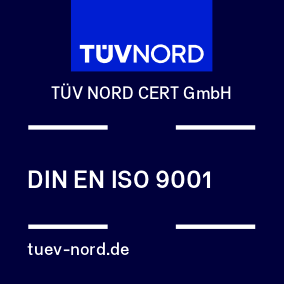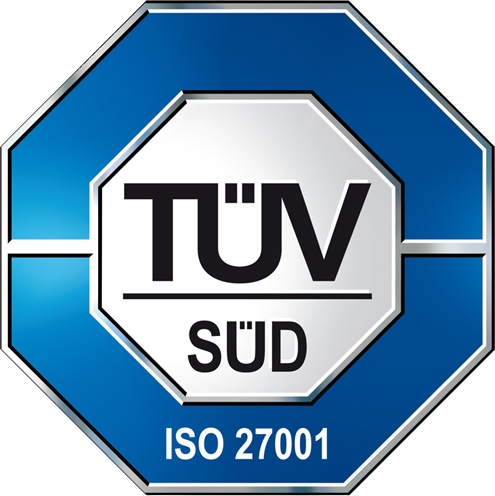Main content:
What is a design?
Design protection legally safeguards the appearance of an industrial product. The appearance comprises those product features that are discernible to the human eye such as color, shape, surface structure and material. Both three- as well as two-dimensional objects can be legally protected as designs, e.g. clothing, toys, furniture, cloths, logos or graphic symbols.
What a design does not protect however is the idea or invention on which the product is based, its production or something similar. Neither does a design legally protect the function of an object. Components not discernible when used as intended (e.g. sparking plugs) thus cannot be protected as a design. Too, there is no design protection for computer programs, but this kind of protection does apply to website layouts, for instance. A design constitutes a territorially limited and temporarily valid exclusive right (a monopoly of maximally 25 years’ duration) and entitles the holder to exclude others from producing the subject-matter of the invention industrially, marketing and selling or otherwise using the same.
Summary of the Articles:
- Prerequisites for a Design Application
- Search for Designs
- The Design Application
- What happens after applying – The Grant Procedure
- Costs/Duration of Protection
- The Design is Granted
- Design Protection Abroad
1) Prerequisites for a Design Application
The design must be new on the date of application. Should a design be disclosed prior to the date of application or the priority date it is not new. Whether or not the design is already accessible to the public anywhere in the world is not the only crucial factor. What really counts is whether the design could have been known to those professional circles active within the EEA and in the industrial field the design pertains to while going through the motions of normal business operation.
Disclosing your design to third parties confidentially is not detrimental to its novelty. Nor is it prejudicial to the novelty of the design if you as its designer or your legal successor disclosed the design to the public sometime during the 12 months prior to the application or priority date (period of grace). Bear in mind however, that this period of grace is not acknowledged in all countries.
The design must possess individual character. This is the case if and when its overall impression is sufficiently different from that of other previous designs. In determining this, the type of product that involves the use of the design is taken into consideration as is the respective industrial field. The shape of a design must not be determined solely by its technical function.
In this way, monopolization of shape and dimensions of connecting elements is prevented. Obtaining design protection however is possible should the design of a connecting element constitute the innovative character (e.g. Lego bricks – Lex Lego).
A design may not contradict morality. A design also may not infringe upon older, already existing designs. It is thus imperative that prior to a design’s application it is determined whether the design does not already exist.
2.) Search for Designs
The information whether a particular design exists can be provided by the Customer Service Center. For this you need to know at least the design holder’s name. You can search for already existing designs in the Austrian Design Gazette, published monthly. The European Union Intellectual Property Office in turn offers a databank for Community designs as does the World Intellectual Property Organization for international designs.
3.) The Design Application
When submitting your application please bear in mind that using form MU 1e (Single Design Application) or MU 1s as well as MUsBB (Multiple Design Application) eases fulfilment of formal requirements.
Designs cannot be comprehensively protected. Rather, the application must specify which products your design will be used for. For this please use the Locarno Classification (comprising 32 main classes of goods and 223 subclasses) and the alphabetical list of goods.
Design Illustrations
Please note that your application must include at least one design illustration (photograph or drawing). The exception to this is the application for a secret design. Those features of a design made visible through the design application are the key determinants of legal protection.
Design illustrations may be photographs or drawings in black and white or color. Drawings should not be larger than in A4 format, photographs should not exceed 21cm x 14.8cm (A5 format). Submittal of technical drawings is not permissible. Also not permissible is the simultaneous submittal of color photos and monochrome drawings. Up to 10 different illustrations of a design may be submitted. The illustrations should render the design clearly, if possible without any additional features. Graphic elements (arrows), text commentaries to images for instance are accounted additional features that do not pertain to the subject-matter for which legal protection is being sought. An exception to this rule is presentation aids such as e.g. transparent dummies for clothing items.
Design Specimen
Only in those cases where you consider it imperative in order to submit an unequivocal disclosure of the design is it necessary to submit a design specimen. The submittal of a “three-dimensional design” necessitates the one-off payment of an EUR 80.00,- storage fee. Such a design specimen should not weigh more than 10 kg and be larger than 50 x 40 x 40 cm. When submitting a design specimen additional illustrations of the design that clearly reflect the design specimen must be submitted for the purposes of publication and registration.
4.) What happens after applying – The Grant Procedure
To begin with your application is examined to determine whether its subject-matter actually constitutes a design and/or the application exhibits any formal defects. Should the latter be of an amendable nature you will be requested to rectify the application. Should your application however comprise neither illustration nor a design specimen, or exhibit additional features that obscure the subject-matter for which protection is being sought it shall be deemed incapable of emendation. In this case the only option left is the submittal of a new application.
The application procedure does not settle the questions whether a design is new, possesses individual character or whether prior rights exist. Whether the design is solely determined by its technical function or whether the applicant is actually entitled to be holder of the particular design is likewise an issue not settled.
5.) Costs/Duration of Protection
The average costs for a national single design application including registration and publication amount to EUR 127.50,-, those for a national multiple design application with up to 10 designs come to EUR 577.00,-;. A secret design application entails a surcharge amounting to 50%. Please do not make any payments when applying. You receive a payment slip that includes your reference number and a specification of the purpose of payment within two weeks following your application. Detailed list of all fees.
The maintenance of your design for a maximum of 25 years requires the payment of a renewal fee every 5 years. This amounts to EUR 130.00,- in the case of single designs and EUR 88.00,- per individual design where multiple designs are concerned. Due dates of renewal fees can be queried online. For this you need your register or reference number (e.g. 62049 or 12/2009).
Publication and Registration
The publication of a design in each case takes place on the 20th of the month. As of this date protection of the design is in force. Registration is published in the Austrian Design Gazette, entered in the register and a sample certificate issued.
Annulment of a Design
Registration does not automatically guarantee that design protection exists until the very end of its period of validity. If third parties are able to prove that registration should not have occurred they are entitled to apply for the annulment of the design (§ 30 MuSchG). It is possible to appeal against the rulings of the Austrian Patent Office. The Higher Regional Court of Vienna (Oberlandesgericht Wien) (§ MuSchG) and subsequently the Supreme Court (Oberster Gerichtshof) (§ 43b MuSchG) deal with such appeals.
Design Infringement
Infringement of your design entitles you to sue for an injunction, removal, publication of the judgement, reasonable compensation, damages, disgorgement of profit, rendering of accounts as well as disclosure of origin of source and channels of commerce (§ 34 MuSchG).
Community Designs
Community designs provide protection throughout the entire EU. There is a difference between a registered and a nonregistered Community design. The European Union Intellectual Property Office (EUIPO) is responsible for application and/or registration.
Design International
International designs can be deposited with WIPO through the Hague Agreement concerning the International Deposit of Industrial Designs. Currently there are 62 member countries of which Austria, however, is not one. By means of the connection of EUIPO’s system regarding Community designs with the aforesaid Hague Agreement Austrian applicants are enabled to gain access to the Hague System through the EU basis and thus obtain protection in other member countries.

